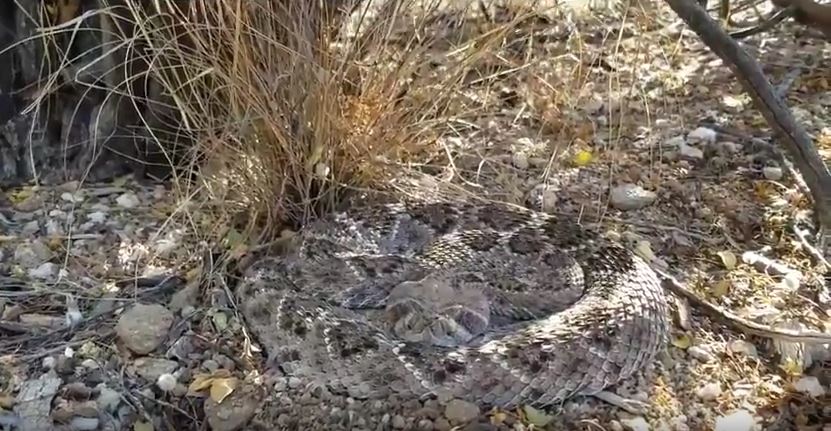The Diamondback Rattlesnake: appearance, biology, life cycle, habitat, diet, behavior

The diamondback rattlesnake is also known as the Crotalus Atrox, and it is among the most misunderstood reptiles. It is said to be ornery, calculating and cold-blooded. Even with its negative reputation, it is still a symbol of the rugged west.
Habitat: The diamondback rattlesnake can be found in forests, grasslands, thorny areas, rolling plains, deserts and outcroppings. Trash piles and junk yards may offer a refuge to mice and rats and the snake may come in the area to eat them.
Appearance: A diamondback rattlesnake’s coloration can vary depending on the location where it is found. This is because of the genetic expressions for different populations. Its primary color can be brick red, straw yellow, pink, light gray or brownish. It has marks that make up a chevron form that interlace, making a diamond like pattern on the middle of the back of the snake, and this is where it gets its name. The marking can be outlined in white or black. Its head looks broad and it has two diagonal lines that can be present at each side of the eyes that extends to reach the supra labial scales.
Biology: The male can achieve a larger size compared to the females. In spring, males go out of the hibernation sites to look for food and possible mates. When two males meet, they will fight and the winner gets the privilege of mating with a female. After the mating, the female will give birth to 9 to 14 young snakes in September or October.
Diet: The diamondback rattlesnake eats mammals like squirrels, chipmunks, cottontail rabbits, rats and mice. The snake may forage for its prey or it may resort to ambush tactics by lying on the trail of a rodent and waiting to coil over it and then muffle it.
Behavior: The diamondback rattlesnake is most active in March, and its activity is largely dictated by the temperature. In mild temperatures, the snakes are active even during the day, and in August with the heat of summer, the activity becomes limited.
Go back to the How to Get Rid of Snakes page or email us if you have any other questions about The Diamondback Rattlesnake: appearance, biology, life cycle, habitat, diet, behavior
About Us
We are the Pest Education Network, a non-profit organization that focuses on wildlife and pest removal education. Our approach utilizes Integrated Pest Management, a strategy advocating prevention and humane methods.


